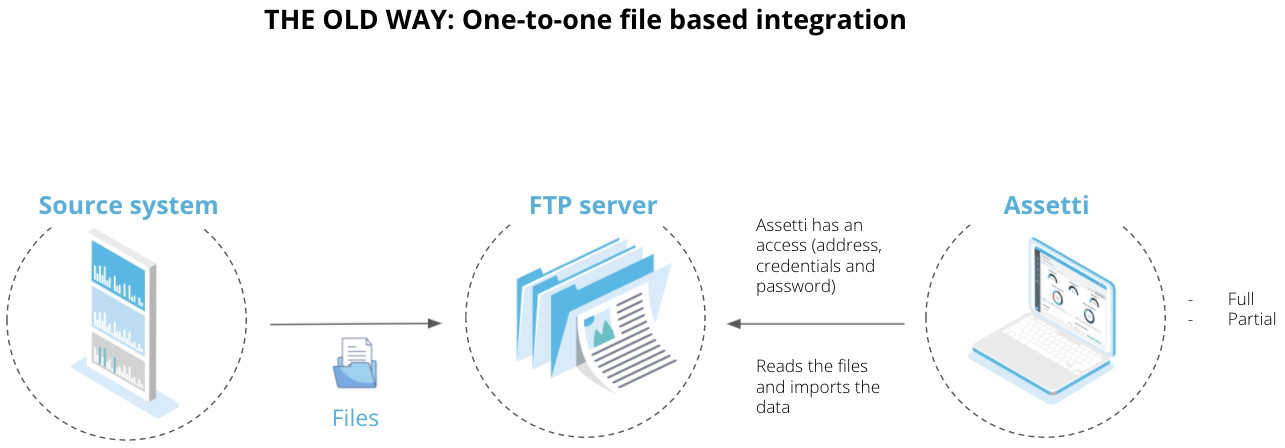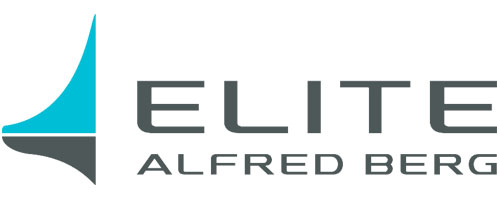Many of our current customers have different legacy systems in use and data stored in multiple applications and platforms. In order to keep data in good shape, they need to find a way to transfer information between them. Today we want to give you a small look behind the scenes of how we work with integrations and API’s to easier maintain data and how we guarantee a better customer experience by utilizing those.
How Integrations add value
When data is stored in various documents and systems, businesses need a way to communicate and move information between sources. Integrations not only connect – they also add value through new functionalities provided by connecting different systems’ functions.
What we have seen from our experience with customers, they run their operations either “in house” or they have outsourced some parts of it. That means, they have multiple systems in use where they edit, combine and maintain data. In order to aggregate a complete picture of all Assets and Portfolios combined, they typically need to integrate to some data source – that might be the one the client is using, but could be as well the system a service provider is working with.
How we connect data
Assetti has at the moment over 50 one-to-one integrations with other systems. That means usually one other system is “talking” to Assetti. We are setting up the integration for our customers and maintaining that connection.
But we can also see the industry moving more and more towards productized integrations. That means that integrations are delivered, maintained and supported by the software company. Customers can use these integrations out of box which means they avoid investing in any custom integration. And also the topic of API (which we released already 3 years ago) is gaining more and more traction in the integrations we are doing. Also, the number of systems you can access through multi meta aggregators is increasing.
Legacy systems control the maturity of the information which new proptech companies and their use cases need. “You need to know where the units are located, what does the property include, what are the rent rolls, and what is the financial data regarding OPEX and CAPEX. And the number of integrations for those will still be increasing” stated Assetti’s CEO Hannu Rantanen.
Our practical approach
And from our own experience we can say: When expanding operations geographically to new countries, you typically encounter new systems with every new market you enter.
For some of our customers in Germany we found a kind of middle layer service solution for those ones using legacy systems. There we are working together with Dynamic Insights, a Hamburg based company specialised in integrating Software and Systems easier and faster. They helped us to compile file based data and transform them into an API. It is great to cooperate with companies able to configure various data sources – for example converting a csv file on an FTP server through an API to Assetti.
“A specific use case: One prospect of ours is using an established legacy system for bookkeeping and accounting. We were wondering if we should do a one-to-one integration and then keep updating and maintaining the connection. Or we can solve the puzzle even better by using services like Dynamic Insights and retrieve data and then utilize our API to get the information fed into Assetti”, Hannu Rantanen concludes.
If keen to hear more, how to turn file based data into synchronous API feed, please spare a few minutes to watch this video.
Also other customers within the Nordics, for example, are working with Assetti integration and our API. To support our customers within the Danish market better, we started a partnership with the software company Jehe. They help us set up integrations for local customers like Bostad and ELF development – including the testing and applying corrections to the integration and transferring all changes from a local ERP system to Assetti.
That eases up work when it comes to mapping accounts but makes importing data through our API also faster. At the moment we set full focus on developing our API further to increase our customers’ experience.


Your Benefits
If you want to connect with Assetti, talk to our API. We open up all data points and you can perform business functions within Assetti through our API.
Assetti Supported deployment ensures our customers a successful start when using Assetti. This includes populating the data from underlying data sources, setting up and configuring the account, on-boarding and training the users as well as setting up the customer service.






